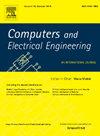Attentive deep learning with Randomized Vector Energy Least Square Twin Support Vector Machine for Alzheimer’s Disease diagnosis
IF 4.9
3区 计算机科学
Q1 COMPUTER SCIENCE, HARDWARE & ARCHITECTURE
引用次数: 0
Abstract
Alzheimer’s Disease (AD), the most common form of dementia, progressively deteriorates cognitive functions, emphasizing the importance of early and accurate diagnosis for effective treatment and management. This study proposes an advanced framework combining neuroimaging and machine learning to enhance the diagnostic precision of AD. Leveraging T1-weighted structural Magnetic Resonance Imaging (MRI) scans, the model employs a 10-layer Residual Network (ResNet) integrated with a multi-head attention mechanism to extract high-resolution features from sagittal slices, focusing on critical regions such as the hippocampus and amygdala. These features are classified using the Randomized Vector Energy Least Square Twin Support Vector Machine (RV-ELSTSVM), a novel classifier designed to improve generalization by employing randomized feature transformations and energy-based regularization. Tested on the Alzheimer’s Disease Neuroimaging Initiative (ADNI) dataset, the proposed framework demonstrates superior performance, achieving classification accuracies of 94.38% for CN vs AD, 88.88% for CN vs MCI, and 92.88% for MCI vs AD. By surpassing existing state-of-the-art methods, this approach highlights the efficacy of combining advanced feature extraction with robust classification techniques for early AD diagnosis. These findings pave the way for impactful clinical applications, offering healthcare professionals a powerful tool for timely intervention and management of AD. The source code of the proposed model is available at https://github.com/rsharma2612/Randomised-SVM.
基于随机向量能量最小二乘双支持向量机的深度学习在阿尔茨海默病诊断中的应用
阿尔茨海默病(AD)是最常见的痴呆症形式,其认知功能会逐渐恶化,因此强调早期准确诊断对有效治疗和管理的重要性。本研究提出了一种神经影像学与机器学习相结合的先进框架,以提高AD的诊断精度。该模型利用t1加权结构磁共振成像(MRI)扫描,采用10层残差网络(ResNet)与多头部注意机制相结合,从矢状面切片中提取高分辨率特征,重点关注海马和杏仁核等关键区域。这些特征使用随机向量能量最小二乘双支持向量机(RV-ELSTSVM)进行分类,这是一种新的分类器,旨在通过随机特征转换和基于能量的正则化来提高泛化。在阿尔茨海默病神经成像倡议(ADNI)数据集上测试,所提出的框架表现出优异的性能,CN与AD的分类准确率为94.38%,CN与MCI的分类准确率为88.88%,MCI与AD的分类准确率为92.88%。通过超越现有的最先进的方法,该方法突出了将先进的特征提取与鲁棒分类技术相结合用于早期AD诊断的有效性。这些发现为有效的临床应用铺平了道路,为医疗保健专业人员提供了及时干预和管理AD的强大工具。建议的模型的源代码可在https://github.com/rsharma2612/Randomised-SVM上获得。
本文章由计算机程序翻译,如有差异,请以英文原文为准。
求助全文
约1分钟内获得全文
求助全文
来源期刊

Computers & Electrical Engineering
工程技术-工程:电子与电气
CiteScore
9.20
自引率
7.00%
发文量
661
审稿时长
47 days
期刊介绍:
The impact of computers has nowhere been more revolutionary than in electrical engineering. The design, analysis, and operation of electrical and electronic systems are now dominated by computers, a transformation that has been motivated by the natural ease of interface between computers and electrical systems, and the promise of spectacular improvements in speed and efficiency.
Published since 1973, Computers & Electrical Engineering provides rapid publication of topical research into the integration of computer technology and computational techniques with electrical and electronic systems. The journal publishes papers featuring novel implementations of computers and computational techniques in areas like signal and image processing, high-performance computing, parallel processing, and communications. Special attention will be paid to papers describing innovative architectures, algorithms, and software tools.
 求助内容:
求助内容: 应助结果提醒方式:
应助结果提醒方式:


